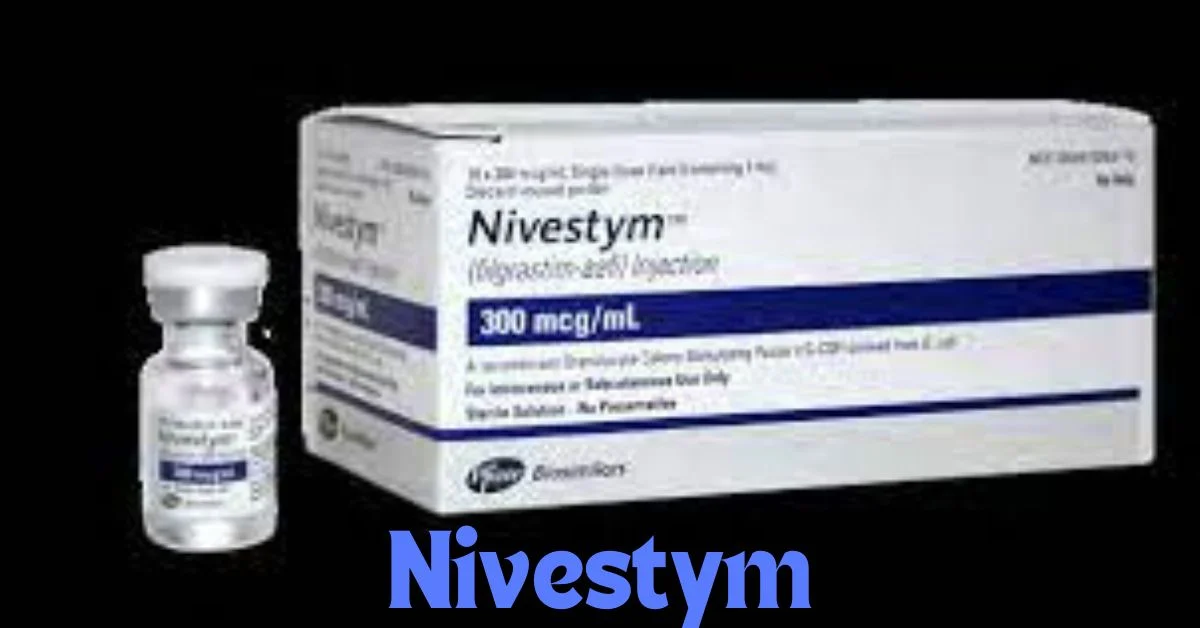Navigating the complex landscape of medical treatments can be daunting, especially when faced with serious conditions requiring advanced therapies. Among the array of treatment options available, Nivestym emerges as a notable contender, offering promising outcomes and practical benefits for patients and healthcare providers alike.
Introduction
In the realm of pharmaceuticals, Nivestym stands as a beacon of hope, offering effective solutions for various medical conditions. But what exactly is Nivestym, and why is it garnering attention as a go-to resource for healthcare professionals and patients? Let’s delve deeper into this ultimate resource.
Understanding Nivestym
What is Nivestym?
Nivestym, a biosimilar to Neulasta, is a medication primarily used to stimulate the production of white blood cells in patients undergoing chemotherapy. It belongs to a class of drugs known as granulocyte colony-stimulating factors (G-CSFs), which play a crucial role in bolstering the immune system.
How does Nivestym work?
Nivestym works by stimulating the bone marrow to produce more neutrophils, a type of white blood cell essential for fighting infections. By increasing the body’s white blood cell count, Nivestym helps reduce the risk of infections in patients undergoing chemotherapy, thereby improving their overall treatment outcomes.
Nivestym vs. other medications
While Nivestym shares similarities with Neulasta, it offers distinct advantages, including cost-effectiveness and broader accessibility. As a biosimilar, Nivestym provides a comparable alternative to Neulasta at a lower cost, making it a preferred choice for both patients and healthcare providers.
Benefits of Nivestym
Efficacy in treating medical conditions
Nivestym has demonstrated efficacy in reducing the incidence of febrile neutropenia, a common complication of chemotherapy characterized by a low white blood cell count and fever. By mitigating this risk, Nivestym helps patients adhere to their chemotherapy regimens and minimizes treatment disruptions.
Cost-effectiveness compared to other options
One of the key advantages of Nivestym is its cost-effectiveness relative to other G-CSFs on the market. The availability of a more affordable alternative allows healthcare providers to allocate resources more efficiently while ensuring patients receive optimal care without compromising quality.
Availability and accessibility
Unlike some specialized medications that may be difficult to obtain, Nivestym is widely available, making it accessible to a broader patient population. Its availability in various healthcare settings ensures that patients can receive timely and convenient access to this essential treatment.
Navigating Nivestym: Dosage and Administration
Recommended dosage
The recommended dosage of Nivestym may vary depending on the patient’s medical condition, treatment regimen, and individual factors. Healthcare providers carefully evaluate each patient’s needs to determine the appropriate dosage and frequency of administration.
Administration methods
Nivestym is typically administered as a subcutaneous injection, which can be performed by a healthcare professional or self-administered by the patient under proper instruction. The injection site and technique are crucial aspects of ensuring safe and effective delivery of the medication.
Tips for safe and effective use
To maximize the benefits of Nivestym and minimize the risk of complications, patients and healthcare providers should adhere to recommended guidelines for dosage, administration, and monitoring. Regular monitoring of white blood cell counts and proactive management of side effects are essential components of ensuring the safe and effective use of Nivestym.
Side Effects and Risks
Common side effects
Like any medication, Nivestym may cause side effects, although not everyone experiences them. Common side effects may include bone pain, muscle aches, headache, and fatigue. These side effects are usually mild to moderate in severity and resolve on their own over time.
Serious risks and precautions
While rare, Nivestym may pose serious risks in certain individuals, particularly those with pre-existing medical conditions or a history of allergic reactions. Healthcare providers carefully assess each patient’s medical history and risk factors to determine the appropriateness of Nivestym therapy.
Who should avoid Nivestym?
Nivestym is contraindicated in patients with a history of severe allergic reactions to filgrastim or pegfilgrastim. Additionally, patients with certain types of cancer or bone marrow disorders may not be suitable candidates for Niv’estym therapy. Healthcare providers evaluate each patient’s medical history and treatment goals to make informed decisions regarding the use of Niv’estym.
Real-Life Experiences
Patient testimonials
Many patients who have received Niv’estym therapy report positive experiences, citing its effectiveness in reducing the risk of infections and improving their overall quality of life during chemotherapy. Patient testimonials serve as a testament to the real-world impact of Niv’estym on individuals battling serious medical conditions.
Healthcare provider perspectives
From the perspective of healthcare providers, Niv’estym represents a valuable tool in the arsenal of treatments available for managing chemotherapy-induced neutropenia. Its efficacy, cost-effectiveness, and ease of administration make it a preferred choice for many clinicians seeking to optimize patient care and treatment outcomes.
Conclusion
Niv’estym emerges as a pivotal resource in the landscape of medical treatments, offering a beacon of hope for individuals undergoing chemotherapy and facing the risk of neutropenia. With its ability to stimulate white blood cell production, Niv’estym not only reduces the incidence of infections but also empowers patients to adhere to their treatment regimens with confidence.
The benefits of Niv’estym extend beyond its efficacy, encompassing cost-effectiveness, accessibility, and ease of administration. As a biosimilar to Neulasta, Niv’estym provides a viable alternative that addresses the needs of patients and healthcare providers alike, ensuring optimal care without compromising quality.
FAQ
What is Niv’estym used for?
Niv’estym is primarily used to stimulate the production of white blood cells in patients undergoing chemotherapy, reducing the risk of infections.
How does Niv’estym differ from Neulasta?
Niv’estym is a biosimilar to Neulasta, offering comparable efficacy at a lower cost.
Is Niv’estym safe for everyone?
While generally safe, Niv’estym may pose risks in certain individuals, particularly those with a history of severe allergic reactions or certain medical conditions.
